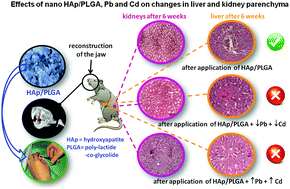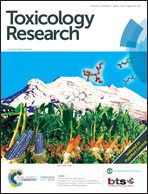Effects of hydroxyapatite@poly-lactide-co-glycolide nanoparticles combined with Pb and Cd on liver and kidney parenchyma after the reconstruction of mandibular bone defects
Abstract
Reconstruction of bone defects with the use of biomaterials based on hydroxyapatite (HAp) has been a popular approach in medicine and dentistry. Most often the process of new bone formation is analyzed with the focus only on the region of the reconstructed defect. The effects of the therapy on distant organs have been rarely reported in the literature, especially not in synergy with the exposure to other bioactive chemicals. In this study, reconstruction of the mandibular bone in vivo using poly-lactide-co-glycolide-coated HAp (HAp/PLGA) nanoparticles was monitored with a simultaneous histopathological analysis of distant organs, specifically kidney and liver parenchyma. Heavy metals are among the most prominent environmental pollutants and have a high affinity for the crystal lattice of HAp, where they get incorporated by replacing calcium ions. Lead (Pb) and cadmium (Cd) are two such metals that can be found in food, water and air, but are most commonly present in cigarette smoke, the frequent contaminant of hospital settings in the developing world. The influence of their presence in the repaired bone on the content of calcium (Ca) in the reconstructed bone defect was analyzed, along with the histopathological changes in liver and kidneys. A study performed on 24 female Wistar rats demonstrated that the reconstruction of mandibular bone defects using HAp/PLGA particles induced an increase in the content of Ca in the newly created bone without causing any pathological changes to the liver and the kidneys. The presence of Pb and Cd in the defects reconstructed with HAp/PLGA nanoparticles impeded the regenerative process and led to a severe and irreversible damage to the liver and kidney parenchyma.



 Please wait while we load your content...
Please wait while we load your content...